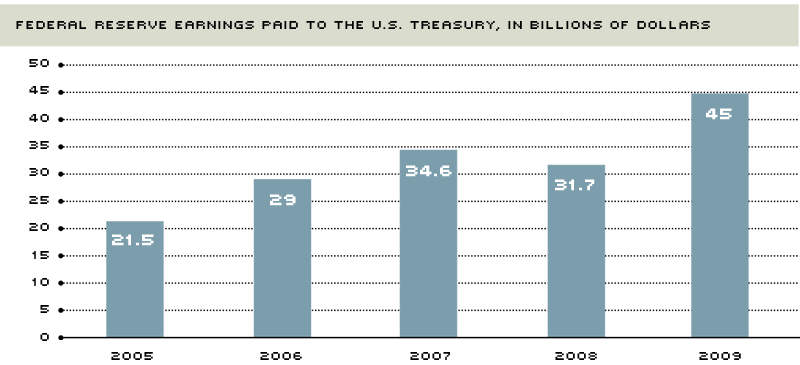Ask An Economist
How does the Fed make money for the Treasury, and are profits audited by Congress or any agency?
The Federal Reserve System is an independent entity within the government. The Federal Reserve's revenue is mainly derived from its regular operations, that is, from the interest on U.S. government securities and discount window lending.
The open market operations are used to buy and sell U.S. Treasury and federal agency securities in the open market, whereas the discount window is used to lend to depository institutions directly from the Fed's lending facility. These operations are used to affect the demand for and supply of balances of depository institutions and affect the federal funds rate.
Other sources of income are the interest on foreign currency investments held by the System and fees received for services provided to depository institutions (for example, check clearing, funds transfers and automated clearinghouse operations). After paying its expenses, the Federal Reserve turns the rest of its earnings over to the U.S. Treasury.
For 2009, the Fed returned about $45 billion to the Treasury. This is the most in the 96-year history of the central bank. The record amount results from the programs the Fed initiated as a response to the largest crises since the Great Depression. These programs included the purchase of bonds and mortgage-backed securities to reduce the interest rate and, therefore, to stimulate the economy. The profit last year was 30 percent higher than the largest previous refund to the Treasury, which occurred in 2007. Despite its independence, the Federal Reserve System and the Reserve banks are audited and reviewed at different levels every year. The complete reports, audits and assessments by the Government Accountability Office (GAO) and the Board's Office of Inspector General (OIG) are available in the Board's annual report. Go to www.federalreserve.gov/boarddocs/rptcongress/ to read the report. Because the Fed is self-financed, it is not subject to the congressional budgetary process.
Fed Earnings

SOURCE: Federal Reserve Board of Governors
Views expressed in Regional Economist are not necessarily those of the St. Louis Fed or Federal Reserve System.
For the latest insights from our economists and other St. Louis Fed experts, visit On the Economy and subscribe.
Email Us

